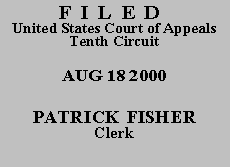

| UNITED STATES OF AMERICA,
Plaintiff-Appellee, v. CEDRIC SEBASTIAN STUBBS, Defendant-Appellant. |
|
Defendant pled guilty in January 1994 to an indictment that charged him with knowingly using and carrying a firearm during and in relation to a drug trafficking offense, in violation of 18 U.S.C. § 924(c). Defendant did not take a direct appeal. In August 1999, he filed the present § 2255 motion, claiming that his plea was not knowing and voluntary because he was misinformed by the district court as to the true nature of the crime charged. Specifically, defendant contended that he was not informed that "use" of a firearm under § 924(c) requires active employment of the firearm, as the Supreme Court held in Bailey v. United States, 516 U.S. 137, 144 (1995).
The government moved to dismiss defendant's § 2255 motion on the ground that it was untimely. In response, defendant argued that he was actually innocent of the firearm charge to which he pled guilty and, therefore, that the statute of limitations should not be applied to bar his claim. Defendant's claim of actual innocence was based on his contention that because he did not actively employ the firearm, he could not be convicted under § 924(c).
On appeal, defendant again asserts that his claim of actual innocence should toll the statute of limitations. He relies on our opinion in Miller v. Marr, 141 F.3d 976, 978 (10th Cir. 1998), in which we intimated that the actual innocence of a defendant may be grounds for tolling AEDPA's similar one-year statute of limitations for state prisoners. See 28 U.S.C. § 2244(d)(1). We also said, however, that while "[t]he one-year time period begins to run in accordance with individual circumstances that could reasonably affect the availability of the remedy, [it] requires inmates to diligently pursue claims." Miller, 141 F.3d at 978 (citations omitted). Defendant's underlying challenge to his conviction is based on the Supreme Court's opinion in Bailey, which was issued in December 1995. Defendant had more than a year after the Bailey decision to bring his current claim before the statute of limitations ran in April 1997. Defendant, however, did not file his current claim until August 1999. Thus, defendant has not diligently pursued his Bailey claim, and he has provided no explanation for his failure to do so. On this basis alone, the district court would have been well within its discretion to dismiss defendant's § 2255 motion as untimely.
Moreover, even if the actual innocence of a defendant provided a basis for tolling the statute of limitations, a matter which we need not decide, no such tolling is warranted here, because defendant has not presented a valid claim of actual innocence. The Supreme Court has held that a defendant in a collateral proceeding who wishes to establish his actual innocence to avoid a procedural bar to consideration of the merits of his underlying claim must "demonstrate that, in light of all the evidence, it is more likely than not that no reasonable juror would have convicted him." Bousley v. United States, 523 U.S. 614, 623 (1998) (quotations omitted); see also Schlup v. Delo, 513 U.S. 298, 327-28 (1995). At least one other circuit has applied this same standard in judging a claim of actual innocence for purposes of tolling AEDPA's one-year statute of limitations. See Lucidore v. New York State Div. of Parole, 209 F.3d 107, 114 (2d Cir. 2000), petition for cert. filed, 69 U.S.L.W. 3086 (U.S. July 5, 2000) (No. 00-40).
Because defendant was charged with both using and carrying a firearm during and in relation to a drug trafficking offense, he must establish his factual innocence of both forms of conduct. Although defendant has argued that there is no evidence that he actively employed the gun so as to support a charge of use, he has not shown that there was no evidence that he carried the gun during and in relation to a drug trafficking offense. To the contrary, he testified at the change of plea hearing that after he was contacted by a potential purchaser, he first went and got the gun in question and then got the drugs and took them with him to meet the purchaser. Defendant testified that he was arrested after delivering the drugs, while still in possession of the gun. Because defendant has made no showing that he is factually innocent of both using and carrying a firearm during and in relation to a drug trafficking offense, there is no basis for tolling the statute of limitations here. Therefore, we need not decide "whether the Constitution requires an 'actual innocence' exception to AEDPA's statute of limitations." Id. at 114.
We conclude the district court properly dismissed defendant's § 2255 motion as untimely, and we AFFIRM the judgment of the district court. The government's motion to supplement the record is GRANTED.
Entered for the Court
Circuit Judge
*. This order and judgment is not binding precedent, except under the doctrines of law of the case, res judicata, and collateral estoppel. The court generally disfavors the citation of orders and judgments; nevertheless, an order and judgment may be cited under the terms and conditions of 10th Cir. R. 36.3.
1. After examining the briefs and appellate record, this panel has determined unanimously that oral argument would not materially assist the determination of this appeal. See Fed. R. App. P. 34(a)(2); 10th Cir. R. 34.1(G). The case is therefore ordered submitted without oral argument.
2. We previously granted defendant a certificate of appealability on his claim that the statute of limitations should be tolled because of his alleged actual innocence.